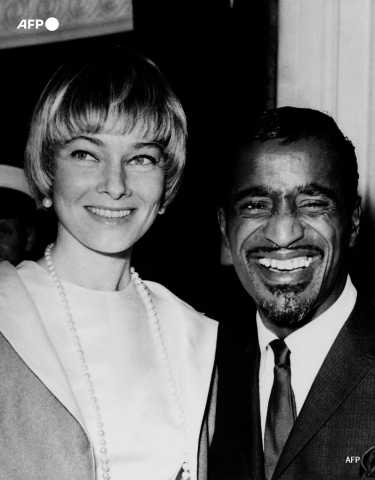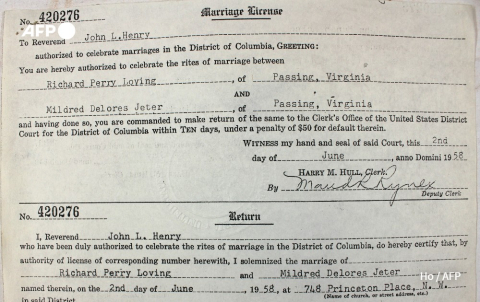Mixed marriages, a taboo broken

Marriage between whites and blacks was up until 1967 a crime in 18 US states that was punishable by prison.
A mixed couple from the state of Virginia changed all that, leading the highest court in the land to legalise interracial marriages across the whole of US territory.
At the time only three percent of married couples were mixed race. Among these, marriages between whites and blacks were even more of a rarity: only 2,500 were registered in 1967.
- Ostracised -
Mixed marriages did not pass unnoticed, even in states where they were legal.
The 1960 marriage of black singer and actor Sammy Davis Jr and Swedish actress May Britt caused much controversy.
The publicity was disastrous for the cinema career of the Scandinavian actress: Hollywood manifested its hostility by systematically refusing to hire her.
In the states where mixed marriages were banned, interracial couples were ostracised or had to stop living together if they wanted to remain there.
- Lovings defy law -
The marriage in 1958 of a young Virginia couple led to a change in the law.
They were Mildred Jeter, 18, who was born to an African American and a native Indian, and Richard Perry Loving, a 22-year-old white man.
Their union was illegal under a 1924 Virginia law called the Racial Integrity Act, which made marriage between a "white" person and a "coloured" person a felony.
So they married in Washington DC, where interracial marriage was legal, and then returned to Virginia.
However Virginia also banned interracial couples from leaving the state to be married elsewhere.
About a month after the Lovings' wedding, police raided their bedroom in the middle of the night to arrest them for unlawful cohabitation.
The Lovings pleaded guilty and were sentenced to a year in jail, suspended as long as they agreed to leave Virginia and not return as a married couple.

- Case to Supreme Court -
The Lovings moved in with relatives in Washington DC from where, with the help of the American Civil Liberties Union (ACLU), they worked to get the racist law amended.
ACLU filed a suit to have the Lovings’ convictions overturned on the grounds that Virginia’s ban on interracial marriage violated the Constitution.
The case made its way to the Supreme Court, which had until then declined to rule on the question of mixed marriages.
The couple had the backing of the Roman Catholic Church, which sent 16 prelates from the south and southwest to lobby the court.
On June 12, 1967 the nine judges decided unanimously to declare the ban on mixed marriages unconstitutional.
"The freedom to marry has long been recognized as one of the vital personal rights essential to the orderly pursuit of happiness by free men ... ," Chief Justice Earl Warren wrote.
- Mixed marriages spread -
Through this ruling, interracial marriages became legal across the whole of US territory.
Little by little the practice spread, including in the states where mixed marriages were banned.
The first marriage of a black and white couple was celebrated in the southern city of Louisiana on August 14, 1967.
White student John Zippert, 21, and Carol Ann Prejean, 23, said "yes" in a Catholic church in a black neighbourhood in the presence of "600 enthusiastic people," AFP reported at the time.
Alabama was the last state to end the ban on mixed marriages. The conservative southern state only did so in 2000 when it modified its Constitution.
